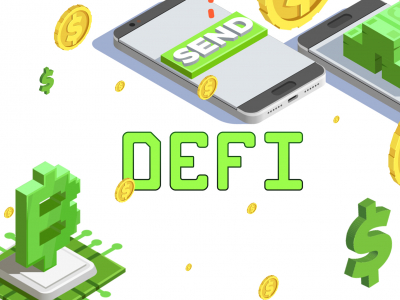Many companies rush to invest in blockchain without a clear understanding of its purpose. The head of the investment fund Life.SREDA Igor Pesin speaks about main problems of Russian startups and the company’s investment plans.
CoinFox: What kind of blockchain startups are currently the most attractive for investors? What is the average time from investment to exit?
Igor Pesin: By now, the blockchain industry has passed several stages of evolution — there are industry-specific protocols and standards, consortiums, technological platforms and so on — it is safe to say that blockchain infrastructure is already here. Therefore, investors are now interested in applications to be built on this infrastructure, to be used by end customers and bring operating and financial results. In other words, investors are looking for the so-called killer app – the product that will become mainstream and landmark for the market and will reveal to the global mass audience all advantages of the blockchain technology.
Concerning exit time, it depends on particular startups, but we suggest a 3-5 years exit horizon, taking into account that there are obvious strategic buyers (banks, insurance companies, financial holdings, exchanges etc.), and many startups will be developed with a focus on a particular exit strategy.
CF: How many projects are in Life.SREDA’s portfolio at the moment? How many of them are connected with blockchain or cryptocurrencies?
IP: As of now, Life.SREDA has invested into more than 20 fintech companies all over the world (USA, Europe, Russia, CIS, Asia). However, we have deliberately abstained from investing into blockchain so far, because our first task was to form a strong blockchain-oriented team with professional expertise not only in investment but also in the blockchain technology, which would be able to forecast its future. By now, the blockchain team is formed (with headquarters in London, and led by the famous fintech expert Chris Skinner), and we plan to make the first investments in the 3rd or 4th quarter of this year.
CF: Don’t you think that the blockchain segment is now becoming a bubble? Isn’t this market overvalued?
IP: I would agree that these days there is much more noise around this technology than actual results. Many, especially banks, start investing in blockchain without a clue about the purpose, without proper competence, knowledge, experience and overall vision of the process. Most of these “non-professional” investors will undoubtedly make a lot of mistakes and get a negative experience. However, professional investors, such as Life.SREDA, are able to identify truly strong innovative blockchain teams who can seriously change the financial industry. For us, the market is not overvalued, and I am absolutely sure that some blockchain companies will reach global success.
CF: Will the volume of investment in blockchain startups carry on growing?
IP: In the following years, investments in blockchain will certainly be growing rapidly. It will be two-fold growth this year or, to be precise, the volume will increase 120-150% comparing to 2015 ($2.2-2.5 bln in 2016 against $0.9-1 bln in 2015).
CF: Why the fund invests mostly in foreign startups? What are Russian startups lacking in terms of investment attractiveness?
IP: There are several main disadvantages to Russian venture market, and fintech/blockchain market in particular. Most Russian startups are inherently local, targeted at the domestic market (which is rather limited and unstable), and not aiming at global development. At the same time, such industries as fintech are by definition global phenomena, because they deal with “digital” product not bound by any borders.
Economic and political stability is crucial for startups. Startup by itself is a very risky and unstable thing, and if you add country risks on top of that (political, economic, currency) you end up with a risk too high and not covered by profitability. That is why investors generally avoid such fluctuating markets.
At the same time, Russia is still a source of wonderful minds and talents (undoubtedly one of the world leaders in that), so we hope that new innovative and attractive for venture investment companies will appear.
CF: Why, with so many blockchain projects for banking being announced, none of them can fully unfold, become a corporate infrastructure?
IP: It takes years, sometimes even decades, to become an industry standard, especially in banking. The industry is very conservative and highly regulated (which is fair enough, because so much is at stake), that is why any solution must undergo multiple tests, hundreds of pilot projects must be created, before the solution is put to industrial use. Such consortiums as R3, DAH or Qiwi-consortium are there to develop the industry standards, but it will take a long time.
CF: Why so many fintech startups cannot expand beyond the local market?
IP: Most fintech startups require an infrastructure to be launched on the new market: core banking infrastructure and a license from regulator – in other words, they need a partner bank. Banks are usually very slow and bureaucratic, closed to innovations, therefore, for startups, cooperation and integration with each one of them is a painful process, which limits their opportunities for mass global expansion. The problem can be solved via so-called bank-as-service platforms, which are some sort of API-equipped process bus between banks and fintech.
CF: How do you plan to integrate your fintech accelerators in Russia and Asia? How will these projects communicate with each other?
IP: The accelerators InspirAsia (Singapore) and InspiRussia (Innopolis) are partners, which means sharing of experience, exchange of mentors, joint office tours, joint events, hackathons, demo days etc. On the operating level, we expect an interaction between accelerated projects, detecting synergies between them and joint work on a variety of tasks. We will give a thorough thought to the collaboration and identification of synergic links when we complete the enrolment of startups in September.
Elena Platonova













